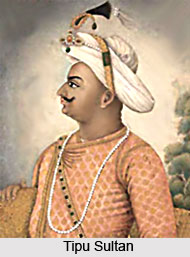 History of Erode district is integrally related to that of the Coimbatore. Erode district came into being as a result of the bifurcation of Coimbatore district, through the G.O.Ms.No.1917, Revenue dated 31st August 1979. It is very difficult to deal separately with the history of Erode region from that of Coimbatore. Together with the area comprised in the Coimbatore district, it formed part of the ancient Kongu country known as `Kongu Nadu`, the history of which dates back to the Sangam era. It is found that in the early days, the area was occupied by tribes, most prominent among them being the `Kosars` having their headquarters at `Kosamputhur` which is believed to have in due course become Coimbatore. These tribes were overpowered by the Rashtrakutas from whom the region fell into the hands of the Cholas who ruled supreme during the time of Raja Chola.
History of Erode district is integrally related to that of the Coimbatore. Erode district came into being as a result of the bifurcation of Coimbatore district, through the G.O.Ms.No.1917, Revenue dated 31st August 1979. It is very difficult to deal separately with the history of Erode region from that of Coimbatore. Together with the area comprised in the Coimbatore district, it formed part of the ancient Kongu country known as `Kongu Nadu`, the history of which dates back to the Sangam era. It is found that in the early days, the area was occupied by tribes, most prominent among them being the `Kosars` having their headquarters at `Kosamputhur` which is believed to have in due course become Coimbatore. These tribes were overpowered by the Rashtrakutas from whom the region fell into the hands of the Cholas who ruled supreme during the time of Raja Chola.
After the decline of Cholas, the Kongunadu came to be occupied by the Chalukyas and later by the Pandyas and the Hoysalas. Due to internal dissension in the Pandian Kingdom, the Muslim rulers from Delhi got a chance to interfere and thus the area fell into the hands of Madurai Sultanate. This region was later wrested by Vijaya Nagar rulers after overthrowing the Madurai Sultanate. For a few years, the area remained under the rule of the Vijaya Nagar kings and later under the independent control of Madurai Nayakas.
The rule of Muthu Veerappa Nayak and later the rule of Tirumalai Nayak of Madurai were marked by internal strife and intermittent wars which ruined the Kingdom. As a result of this, the Kongu region in which the present Erode district is located fell into the hands of the Mysore rulers from whom Hyder Ali took over the reign. Later, consequent of the fall of Tipu Sultan of Mysore in the year 1799, the Kongu region came to be coded to the British East India Company by the Maharaja of Mysore who was restored to power by the company after defeating Tipu Sultan. From then, till they year 1947, when India attained independence, the area remained under British control who initiated systematic revenue administration in the area.



















